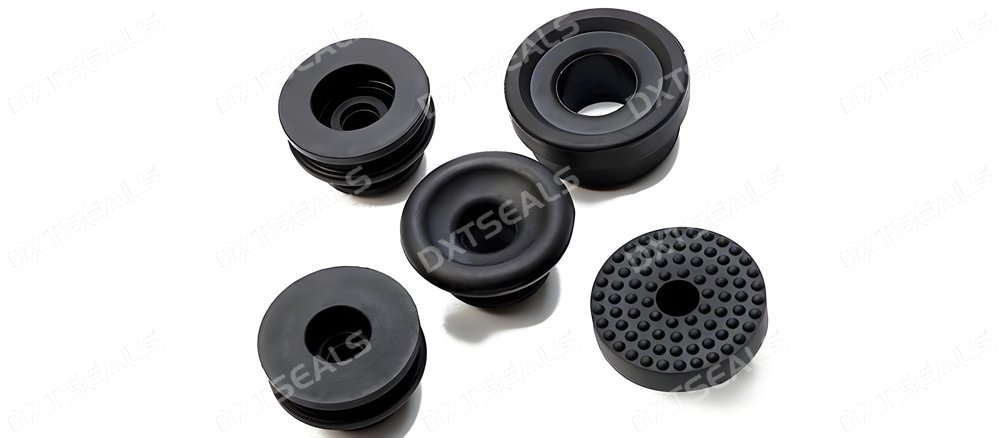
In the world of custom rubber manufacturing, choosing the right processing method is key to achieving optimal performance, efficiency, and cost-effectiveness. While rubber molding remains one of the most widely used techniques, other methods like extrusion, injection molding, and die cutting also play essential roles in various industries.
At DXTSEALS, we specialize in precision rubber component manufacturing, helping clients determine the most suitable process based on design complexity, material selection, volume, and application environment.
🔧 What Is Rubber Molding?
Rubber molding involves shaping uncured rubber into desired forms using heat and pressure within a mold cavity. The most common types include:
-
Compression Molding
-
Transfer Molding
-
Injection Molding
These processes are ideal for creating parts with complex geometries, tight tolerances, and high-performance requirements, such as seals, gaskets, O-rings, and vibration isolators.
🆚 Rubber Molding vs. Other Processing Methods
Here’s a breakdown of how rubber molding compares with other common manufacturing techniques:
| Process | Key Features | Best For |
|---|---|---|
| Compression Molding | High-pressure forming in closed molds. Cost-effective for small to medium runs. | Seals, bushings, grommets |
| Injection Molding | Fast, automated production with high repeatability. | High-volume precision rubber parts |
| Rubber Extrusion | Continuous shaping through a die. | Tubes, hoses, weatherstrips |
| Die Cutting | 2D cutting from sheets using blades or dies. | Gaskets, flat seals, insulation pads |
| Transfer Molding | Similar to compression but allows more intricate shapes and inserts. | More complex molded parts with metal inserts |
✅ Advantages of Rubber Molding
-
Dimensional Accuracy
Rubber molding processes (especially injection and compression) deliver tight tolerances suitable for critical applications. -
Material Versatility
Compatible with a wide range of rubbers including NBR, EPDM, FKM (Viton), Silicone, Neoprene, and more. -
Design Flexibility
Supports complex part geometries, internal features, and embedded inserts. -
Consistency in Large Quantities
Especially with injection molding, parts are produced with minimal variation.
🔄 When to Choose Other Processing Methods
While molding is ideal for precision and complexity, other techniques may be better when:
-
You need long, uniform profiles (→ use extrusion)
-
You require simple, flat shapes (→ use die cutting)
-
Your product demands very high volume and speed (→ use injection molding)
-
Cost is a major concern for basic shapes (→ compression molding is economical)
🏭 DXTSEALS: Your Rubber Manufacturing Partner
With decades of experience in custom rubber part production, DXTSEALS offers:
-
🛠 Expert Process Selection – We match the right method to your project
-
🧪 Material Consulting – Choose the optimal rubber compound
-
📐 Precision Molds – High-quality toolmaking for consistent parts
-
🔍 Strict Quality Control – Every part tested for accuracy and durability
-
🚚 Flexible Production – From prototypes to mass production
🧩 Which Rubber Processing Method Is Right for You?
Choosing the best process depends on several factors:
-
Part complexity
-
Material and performance requirements
-
Volume and cost constraints
-
Application environment
The good news? You don’t have to decide alone. Our technical team at DXTSEALS is ready to evaluate your needs and recommend the ideal solution—be it rubber molding or alternative techniques.
